Savor Northern Thailand: 7 Must-Try Northern Thai Cuisine
Thai cuisine is renowned among foreign tourists, who unanimously agree that it’s something to be tried at least once in a lifetime. However, did you know that Thai food varies by region, with differences in dishes, flavors, and historical backgrounds that are reflected in each menu item? If you want to immerse yourself in the way of life of Thai people in different regions, learning through culinary culture is quite fascinating. Not only will you learn many interesting stories, but you will also get to taste unique flavors that are guaranteed to be delicious.
For tourists planning to visit Northern Thailand, this article has compiled 7 famous Northern Thai foods. These dishes are guaranteed to be as delicious as their reputation suggests. Once tried, they will surely make you want to come back for more. Let’s take a look at what these dishes are.
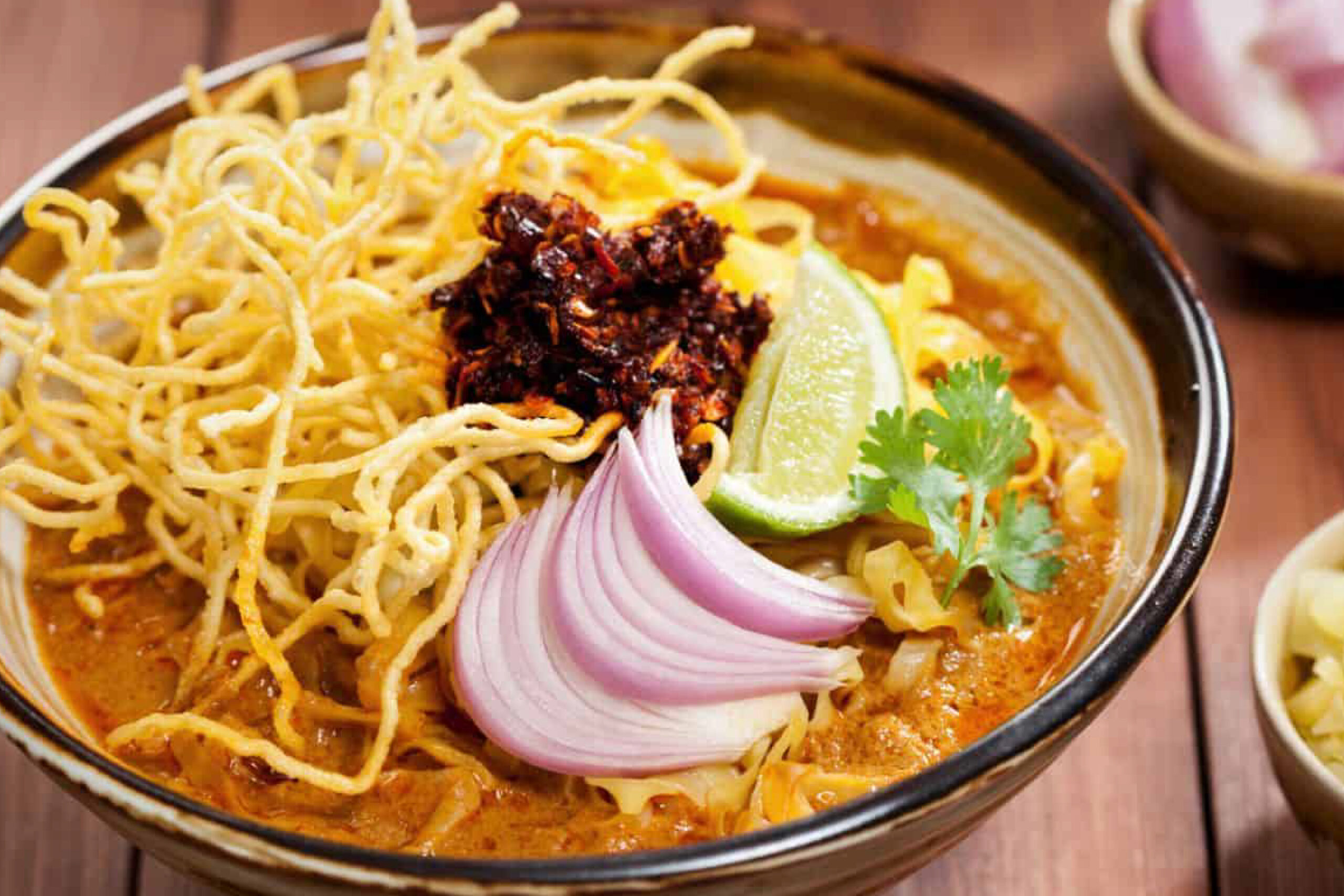
1. Khao Soi
One of the signature dishes of Northern Thailand is Khao Soi or Northern Local Noodle with Chicken Curry. This dish features crispy egg noodles topped with a rich coconut milk curry soup, offering a creamy texture and a distinctive spicy aroma from dried chilies. In addition to the unique taste of the local noodles and soup, Khao Soi is served with side condiments such as pickled mustard greens, lime wedges, chili oil, chopped shallots, and cilantro for garnish. These accompaniments allow for a variety of flavors in each bite. The combination creates a complex and satisfying meal.
Khao Soi not only highlights the culinary ingenuity of Northern Thai food but also provides a unique taste experience that captures the essence of the region’s rich food culture. Each bite is a journey through Northern Thailand’s vibrant flavors.
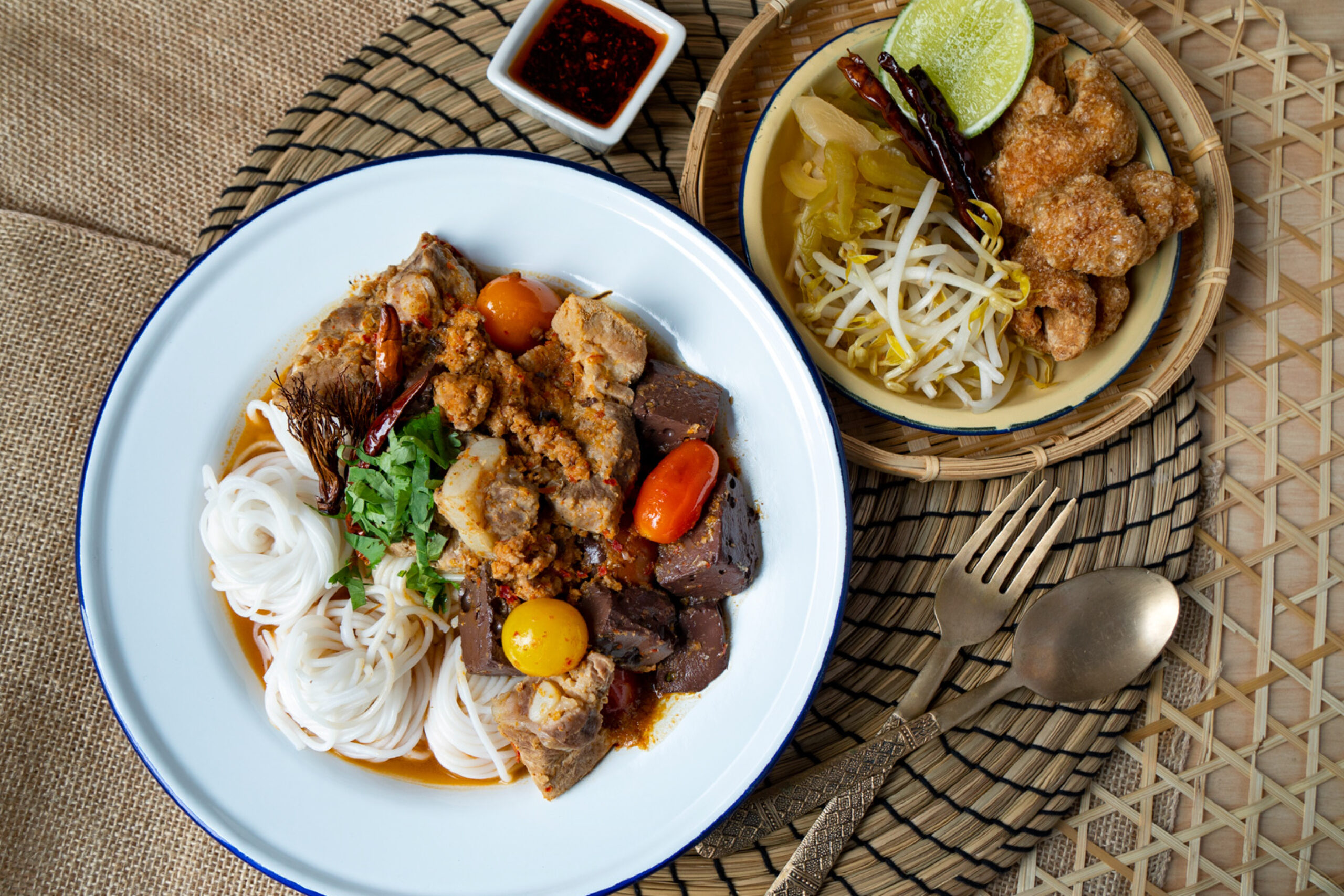
2. Khanom Jeen Nam Ngiao
Khanom Jeen, or Local Thai Rice Flour Noodles, is a beloved dish that has captured the hearts and taste buds of people throughout Thailand. Each region of the country boasts its own unique variations of soups to accompany rice flour noodles, showcasing the diversity and creativity of Thai cuisine.
In Northern Thailand, a distinctive version that has gained popularity even among Thais from other regions is the delectable Nam Ngiao soup. What sets Nam Ngiao soup apart is its tangy and slightly sweet flavor profile, which is derived from the use of tomatoes as a key ingredient. The tomatoes are skillfully stir-fried alongside tender pork, rich pork blood, fermented soybeans, and aromatic dried chilies, creating a harmonious blend of flavors that tantalize the senses. The soup is then served with an array of accompaniments that enhance its overall taste and texture, including crispy garlic, pickled mustard greens, a squeeze of fresh lime, and crunchy pork rinds.
The combination of these carefully selected ingredients creates a well-rounded flavor profile that appeals to both Thai people and international visitors alike. Nam Ngiao’s rich and complex taste, which seamlessly blends sour, sweet, and spicy notes, makes it a standout among regional Thai dishes. The tanginess of the tomatoes, the savory essence of the pork, the subtle fermented notes from the soybeans, and the fiery kick of the dried chilies. These additional elements provide a delightful contrast of flavors and textures that keep diners coming back for more.
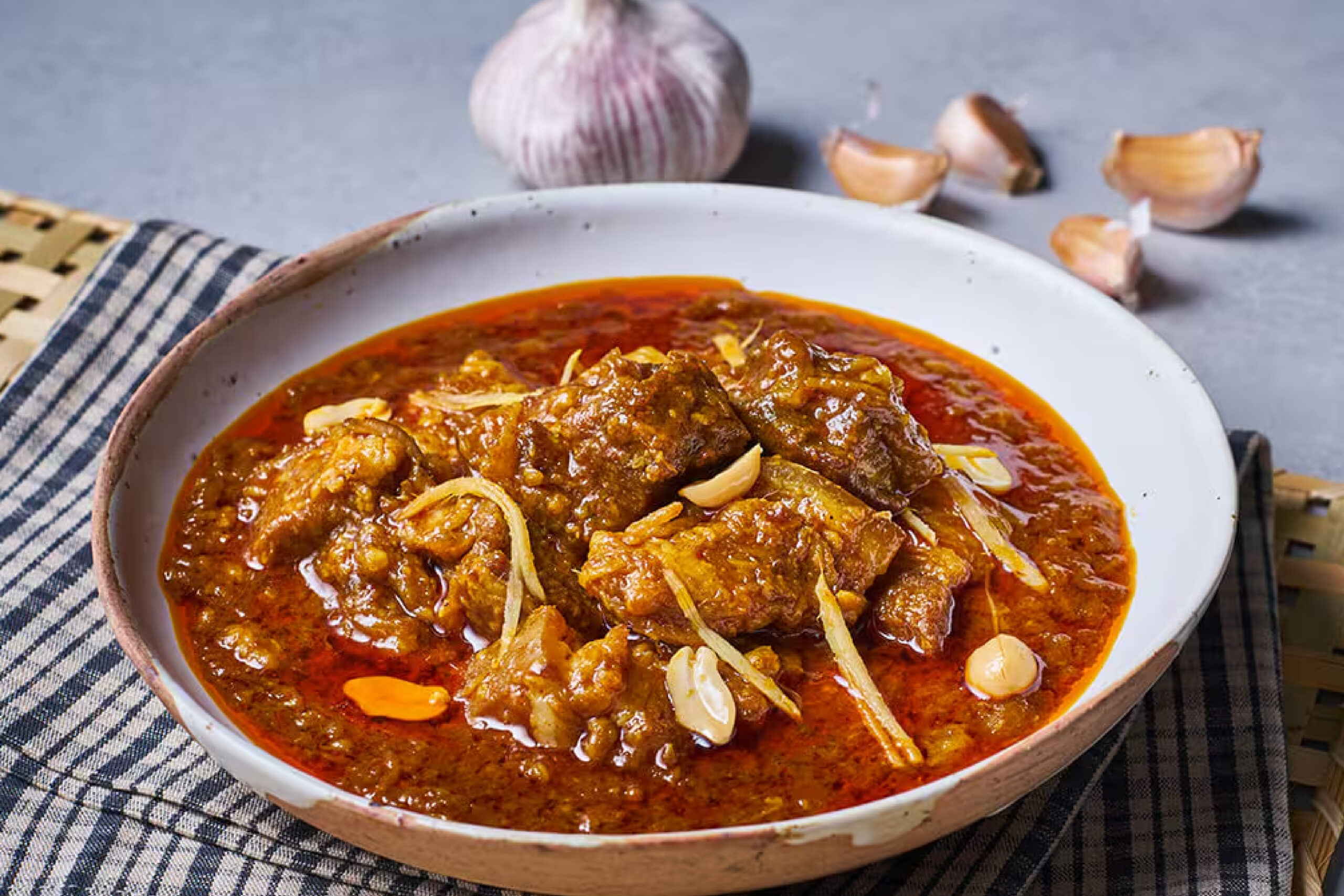
3. Hunglay Curry
Hunglay Curry is one of the best northern Thai foods served during festivals and important events in Chiang Mai, such as weddings, housewarming parties, merit-making ceremonies, and other auspicious occasions. Originating from neighboring Myanmar, this curry is characterized by its unique spice blend from the Northern Thai Hunglay curry paste. The curry features pork marinated with Thai spices such as garlic, ginger, black pepper, and shallots. It is then simmered for at least 40 minutes to achieve a rich, intense flavor. Some recipes include pineapple, adding a tangy element that balances the richness of the curry.
Hunglay Curry is a perfect example of the fusion of cultures and flavors, as it combines influences from Myanmar and traditional Thai cuisine. The extended cooking time ensures that the pork becomes tender, absorbing the aromatic spices and creating a harmonious blend of tastes. This dish is not only delicious but also holds cultural significance, symbolizing celebration and community. Its complex flavor profile, combining savory, sweet, and tangy notes, makes it a favorite among locals and a must-try for visitors. Whether enjoyed at a festive gathering or a family meal, Hunglay Curry showcases the culinary richness of Northern Thailand.
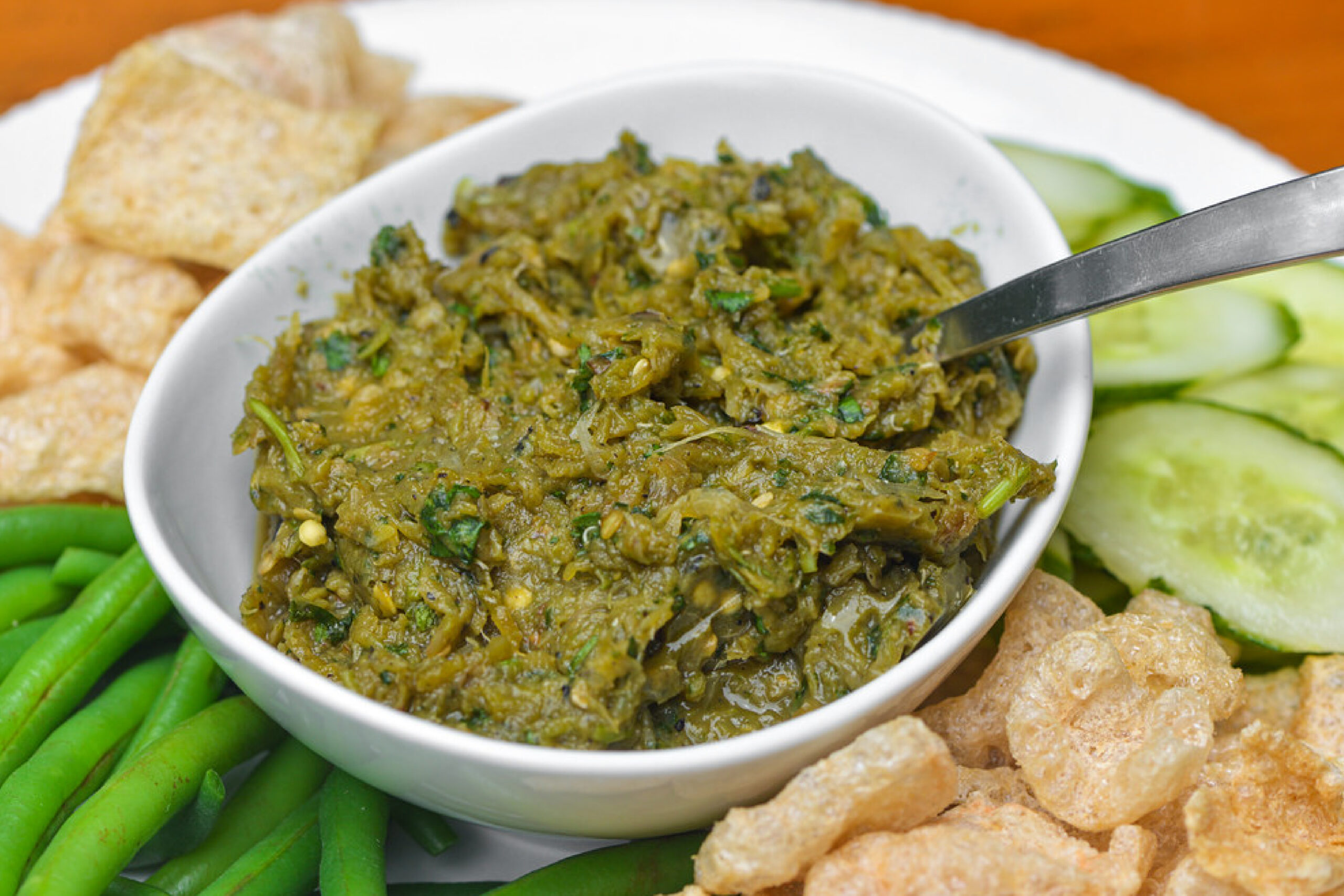
4. Nam Prik Noom
Nam Prik Noom, or Northern Thai Green Chili Dip, is a mildly spicy chili paste popular among both Thais and foreigners. Made from local green chilies called “Prik Noom,” which are young and green color chili, this dip has a distinctive aroma, especially when the chilies are roasted and combined with shallots and garlic. The taste is predominantly salty with a moderate spiciness, making it approachable.
Nam Prik Noom is commonly enjoyed with side dishes such as boiled vegetables, Sai Ua (Northern Thai sausage), and pork rinds. It can be eaten with rice or as a snack, providing versatility in how it is served. The ingredients of Nam Prik Noom also offer various health benefits, such as alleviating bloating and indigestion, providing warmth to the body, and improving skin health due to the antioxidants present in the chilies and garlic.
Nam Prik Noom‘s popularity extends beyond its taste; it also represents the culinary traditions of Northern Thailand. It is often prepared in households using traditional methods, reflecting the region’s commitment to preserving its cultural heritage. Whether enjoyed by locals or visitors, Nam Prik Noom remains a beloved and iconic element of Northern Thai cuisine, celebrated for its taste and cultural significance.
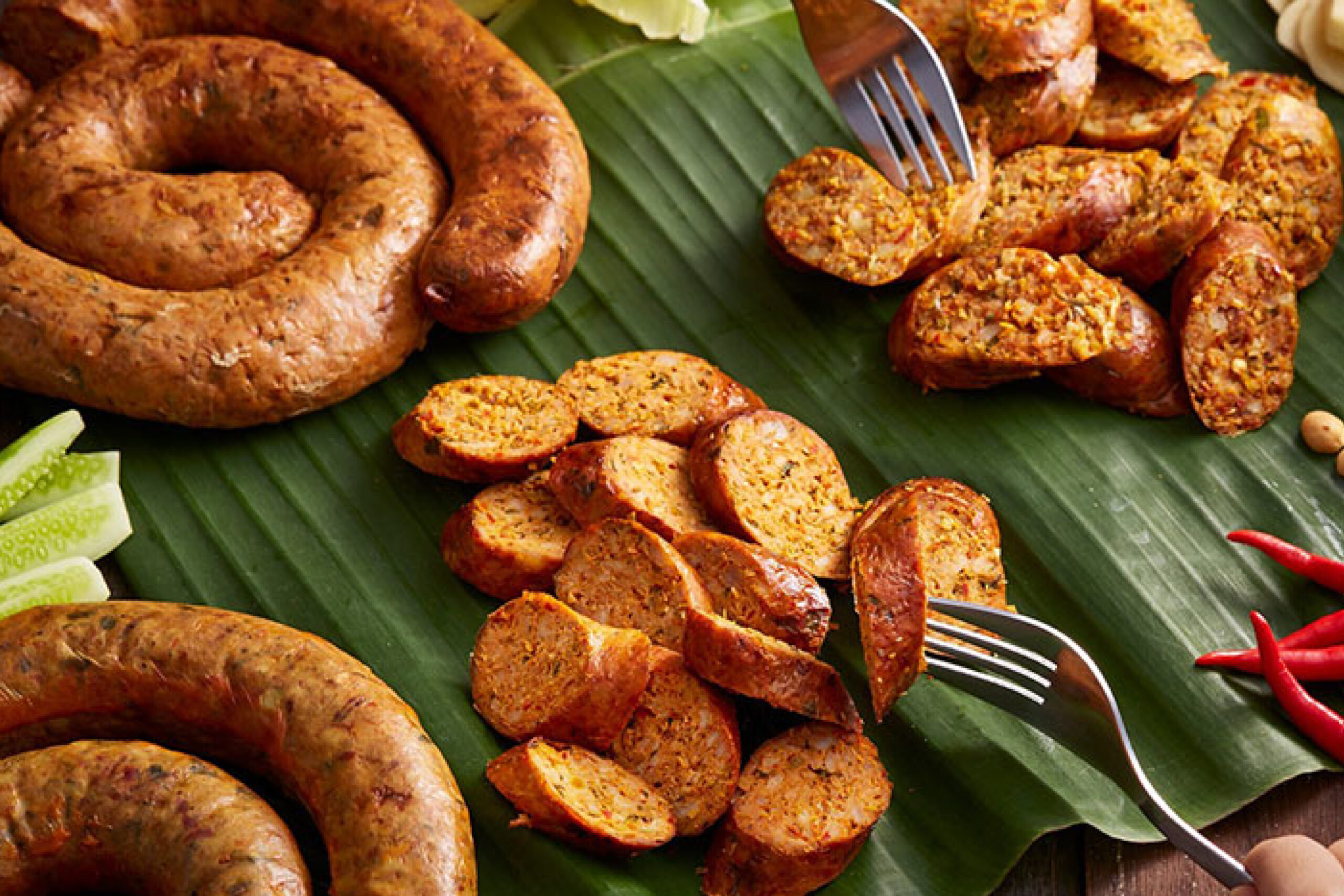
5. Sai Oa
For those familiar with the Isaan-style sausages from Northeastern Thailand, the Northern Thai food offers a similar dish called Sai Ua. This spicy sausage is made by mixing minced pork with garlic, herbs, chilies, turmeric, and various curry pastes, resulting in a fragrant and spicy flavor. Unlike other sausages, Sai Ua is not sweet as it contains no sugar, making it perfect to enjoy with hot sticky rice. Sai Ua is often served alongside Khao Soi and Nam Prik Noom.
Sai Ua in Northern Thailand is not only known for its delicious taste but also for its health benefits. The lemongrass in the sausage acts as an appetite stimulant, black pepper provides antioxidants, kaffir lime leaves help reduce blood pressure, and garlic helps lower cholesterol. With these numerous health benefits, Sai Ua is a highly nutritious Northern Thai cuisine that is definitely worth trying.
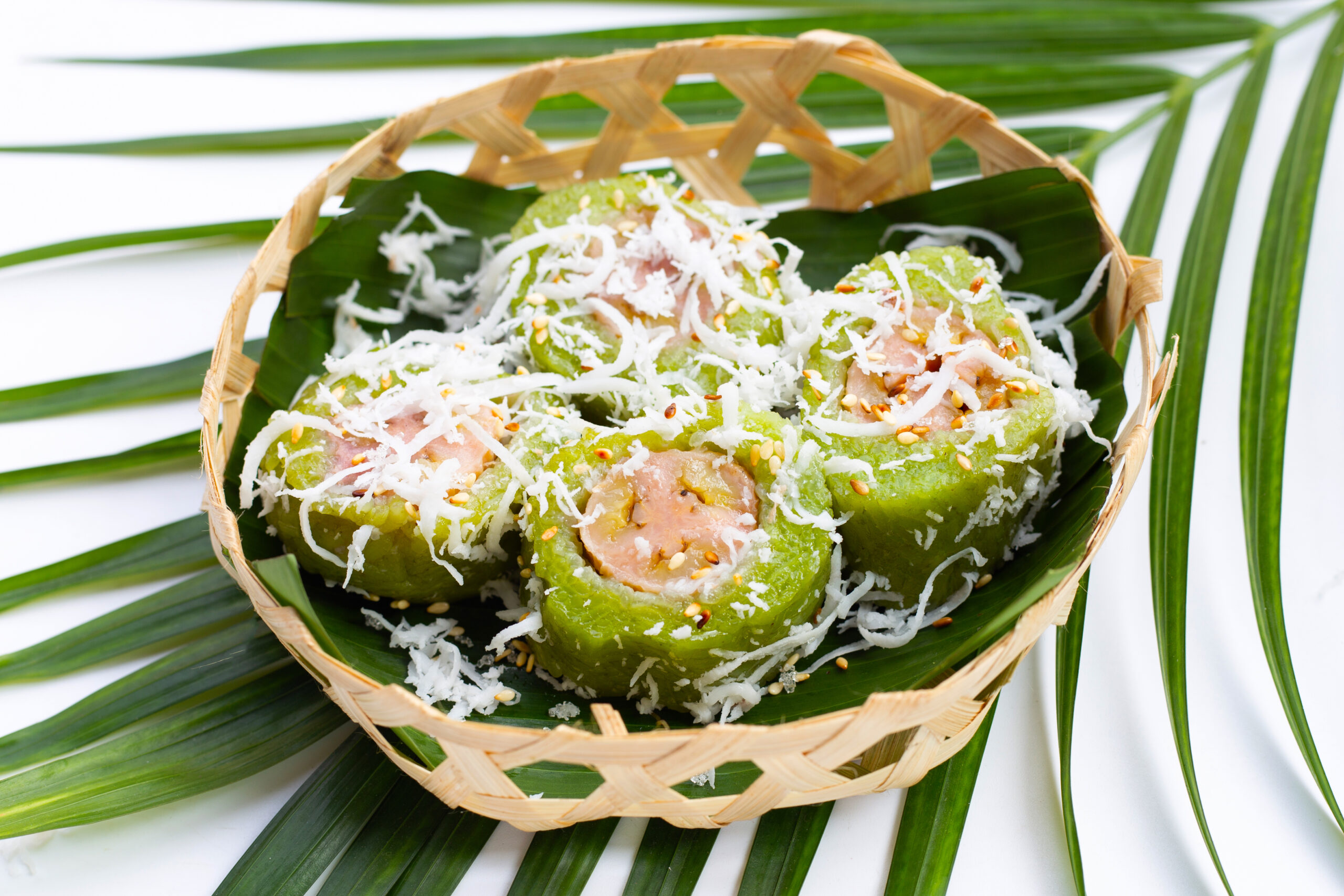
6. Khao Tom Hua Ngok
Khao Tom Hua Ngok is a popular delicacy among the Lanna people in northern Thailand, readily available in local markets. This treat comprises sticky rice mixed with pandan leaf-infused water, lending it a distinct aroma that embodies traditional Thai cuisine. Boiled with ripe water chestnuts, known for their sweet and soft taste, and wrapped in banana leaves for added fragrance, it offers a delightful culinary experience. Served with grated coconut and sugar for sweetness, this northern Thai dessert not only balances the spicy flavors of main dishes but also complements them excellently. Its availability and widespread popularity make it a beloved part of northern Thai culinary culture, cherished by locals and sought after by visitors craving an authentic taste of Thailand’s rich gastronomic heritage.
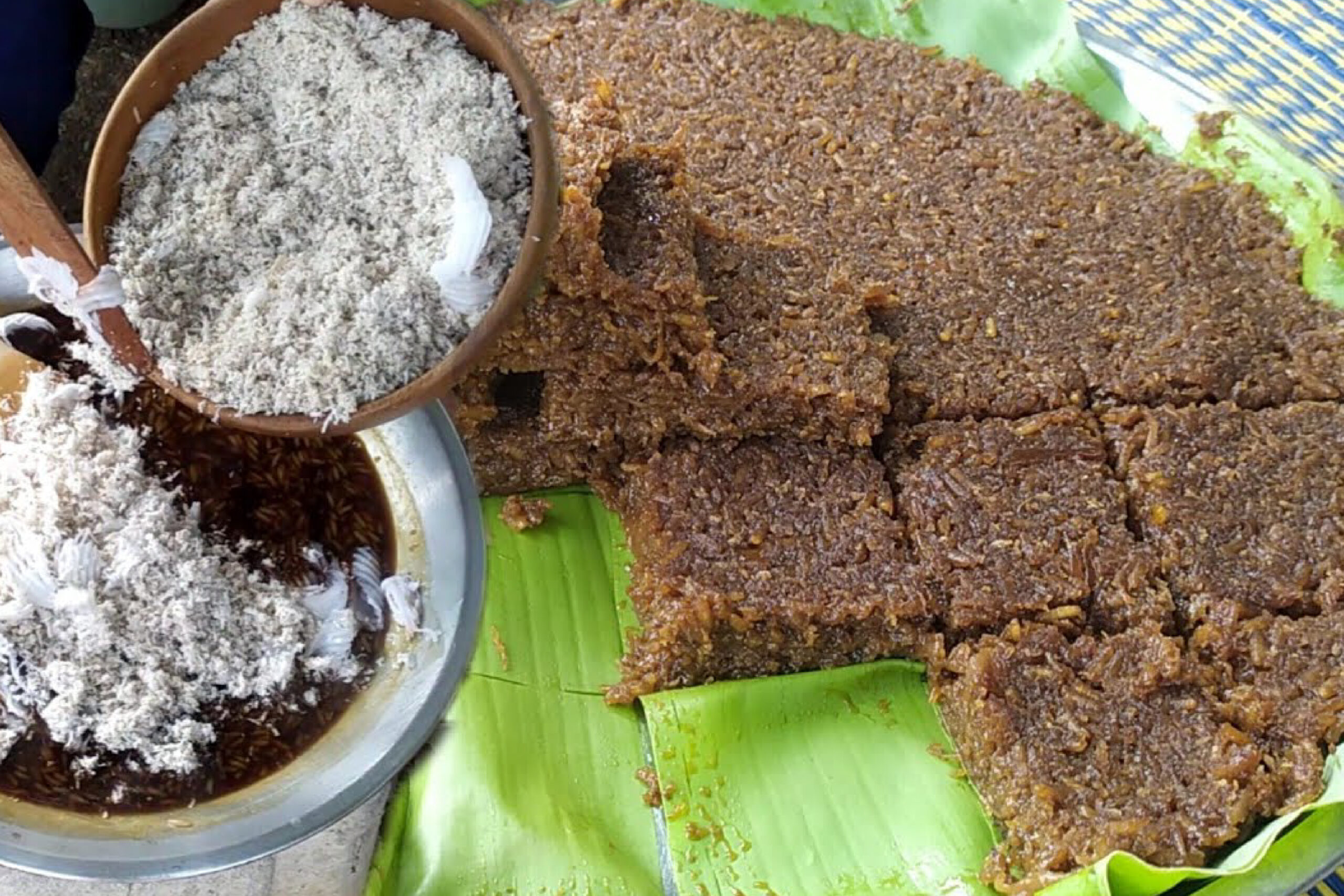
7. Khanom Pard
Khanom Pard is another traditional delicacy of the Lanna people, including those in the Northern region of Thailand in various provinces. Although it’s a local delicacy, it’s often difficult to find on ordinary days because Khanom Pard is typically made only during special occasions and auspicious events such as ordination ceremonies, weddings, housewarming parties, or festivals like Songkran and various religious ceremonies. This treat is made from glutinous rice, sugarcane juice, coconut milk, glutinous rice flour, and arrowroot flour, cooked together to create a sweet, rich, and round flavor. It’s usually made in large quantities and then distributed to each household.
Making Khanom Pard requires a large number of people to take turns cooking the delicacy together, which is why it’s usually only made during festive seasons. It’s a delicacy filled with delicious flavors, and the spirit of cooperation among villagers, and it carries significant cultural and lifestyle values of the northern region. If you’re visiting the northern region during festivals, you must not miss the opportunity to participate in making and enjoying Khanom Pard.
Summary
This article presents 7 typical dishes from Northern Thailand. It emphasizes the importance of trying Northern Thai cuisine and desserts when visiting Thailand, as it offers flavors that are sure to please the palate and provide a deep immersion into Northern Thai food culture. It assures you will be satisfied with the taste and cultural experience offered by these dishes.
For travelers planning to visit Thailand, besides the Northern region, don’t forget to explore Khao Yai. It’s located close to Bangkok, making it a perfect destination for a day or two of relaxation before returning home. Then came to stay at Rancho Charnvee Resort & Country Club, accommodation amidst the natural beauty of Khao Yai, guests can enjoy European-style accommodation with various room sizes to choose from. Plus, there are plenty of activities to do, whether it’s riding ATVs, horseback riding, or cycling to explore nature. Whether traveling alone, with a partner, a group of friends, or family, guests will find this place accommodating for all.

